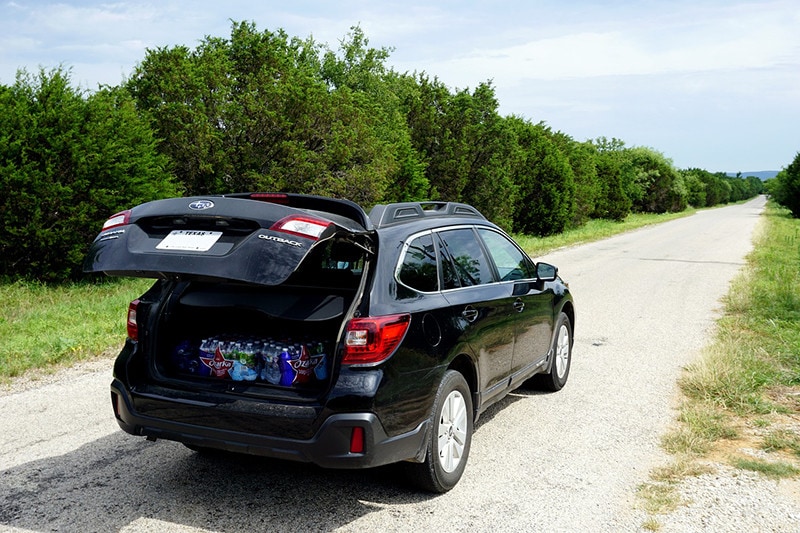How Much Weight Can a Car Carry? The Surprising Answer!
-
Codee Chessher
- Last updated:

Many people never stop to think about how much weight their car can safely support until they need to move something heavy. Because they’re made with different components, every vehicle has a different weight limit. On average, your typical sedan can support up to 850 pounds before bad things start to happen.
You can find your car’s weight limit in the user manual, as well as on a sticker on the inside of the driver’s side door. Limits vary wildly depending on car type, but we’ve put together some averages so you can get a better idea of what your car can safely carry. Bear in mind that this doesn’t include SUVs and trucks, which we’ll get to later. Read on below for the details.
- Compact: 820 pounds
- Mid-sized: 850 pounds
- Full-sized: 900+ pounds
If we figure that the average person weighs about 175 pounds, that means a mid-sized car can hold five people. Coincidentally, most mid-sized sedans have five seats. Squeezing more than five people in a car probably won’t do much harm in the short term, but we wouldn’t make a habit of it.

Dynamic vs. Static Weight Limits: What’s the Difference?

Your car’s weight limit is separated into a dynamic weight limit and a static weight limit. The static weight limit is how much weight your car can safely hold while it’s stationary, while the dynamic weight limit is how much weight it can support while moving.
It’s essential to know the difference and what your car’s limits are because it’s easy to mix them up. In most cases, a car’s dynamic weight limit is much lower than the static limit. Off-roading and sunroofs also usually reduce a car’s weight limit by a significant amount.
What Happens if You Overload Your Car?
Putting too much weight on or in your car can have serious consequences. There’s a whole laundry list of consequences, actually! Let’s check out how serious overloading a car is below.
- Tires will wear out more quickly
- Your car will have worse fuel efficiency when overloaded
- Your suspension will have to work harder, which can wear, damage, or even break it
- Extra strain on your engine means more wear and tear on vital gaskets
- Your power steering system will have to work harder to maneuver
- Your car will brake and accelerate more slowly
Simply put, overloading a car is a very bad idea. It might be acceptable for very short distances, but we strongly urge you to not go over your car’s weight limit. It wreaks havoc on numerous essential parts, which can cost you a pile of money in repairs and parts.
Average Car Weight Limit vs. Other Vehicles

Generally speaking, cars can’t support as much weight as larger vehicles like SUVs, trucks, and semi-trucks. Just like cars, though, the weight limit for those vehicles varies depending on the exact make and model. For the sake of comparison, we’ve compiled the average weight limits for SUVs, trucks, and semi-trucks. Check them out below.
| Type of vehicle | Average weight limit |
| Car | 850 pounds |
| SUV | 1,100 pounds |
| Pickup truck (1 ton) | 10,000 – 14,000 pounds |
| Semi-truck | 80,000 pounds |

Conclusion
Even if you don’t haul heavy cargo very often, it’s good to know what your car’s weight limit is. If you accidentally overload it, you’ll suffer reduced fuel efficiency, worsened handling, sluggish acceleration, and several other detrimental effects. Always strive to keep your car well within its weight limit, and that includes people!
Featured Image Credit: ChiccoDodiFC, Shutterstock
Contents
